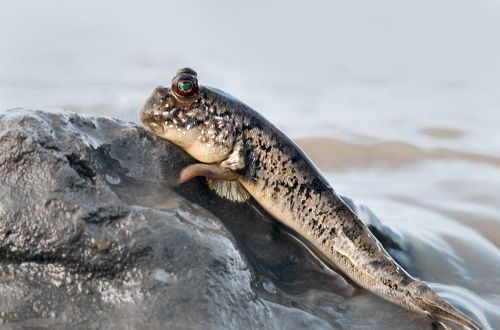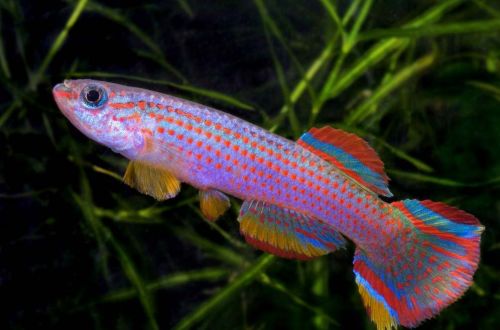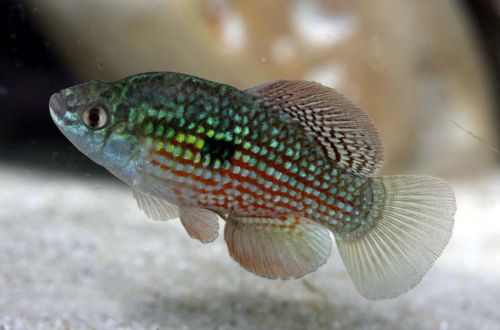
Muddy jumper
The mudskipper, scientific name Periophthalmus barbarus, belongs to the Gobiidae family. A bizarre unusual fish that lives on land. This is the shortest way to describe this species. The fish spends most of its life on the shore, where it feeds, finds a partner for mating, and fights with relatives for territory. Such an exceptional feature has repeatedly become the center of plots in popular science films from the BBC, Animal Planet, National Geographic and others.

Contents
Habitat
It originates from the West African coastline from Mauritania in the north to Angola in the south of the continent. It lives in mangrove swamps near the water’s edge. The area is subject to regular high and low tides, during the latter large areas covered with silt are exposed, on which these fish often linger.
Brief information:
- The volume of the aquarium – from 100 liters.
- Water and air temperature – 25-30°C
- Value pH — 7.0–8.5
- Water hardness – medium to high hardness (10-25 dGH)
- Substrate type – sandy, silty
- Lighting – moderate, bright
- Brackish water – yes, in a concentration of 5-15 grams. per 1 liter of water
- Water movement is weak
- The size of the fish is about 15 cm.
- Nutrition – meat feed
- Temperament – inhospitable
- Content single
Description
Adult individuals reach a length of about 15 cm. Sexual dimorphism is weakly expressed. Outwardly, it is problematic to distinguish a male from a female. The fish has an elongated body and a large head, large eyes protrude above it, located in such a way that they create a 360-degree view. The tail is short but muscular. The pelvic fins have changed to look like the legs of amphibians and perform the function of not swimming, but repulsion from the surface. With the help of them and the tail, the fish moves on land. The dorsal fin is divided in two and resembles a comb when raised. The color is dark or gray with irregular black specks.
Food
A carnivorous species, in nature it feeds on small crabs, insects and other invertebrates. In aquariums, it will accept earthworms, crickets, flies, beetles, small fish, bloodworms, and various crustaceans. Dry food is excluded. It is recommended to serve live or frozen food.
Maintenance and care, arrangement of the aquarium
The size of the aquarium for one fish starts from 100 liters. However, this figure is arbitrary, since the volume of water is not as important as the land area of the Mudskipper. In the design, it is imperative to provide for areas that rise above the surface of the water – a kind of muddy or sandy beaches with snags and stones. The aquarium is equipped with a tight cover, and the heating system must provide an air temperature similar to that of the water. All this will keep high humidity, so the fish will not experience discomfort. The presence of plants is not necessary, but if desired, varieties acclimatized to brackish water, or artificial analogues, can be used.
Brackish water conditions require the use of filters designed more for marine aquariums. Salt concentration is 5–15 gr. for 1 liter of water. Keeping in fresh water is best avoided.
Behavior and Compatibility
The fish differs not only in an amazing way of life, but also in unusual behavior. Mudskippers are extremely territorial. In cramped conditions, it is desirable to keep only one male, and in larger tanks, their number can be increased. If two dominant males converge, a fight begins, or rather a demonstration of strength, which sometimes turns into a skirmish. First there will be a warning, and then an attack.
As a rule, other fish are excluded from joint keeping.
Breeding / breeding
This species is not bred in captivity, even among professional aquarists. This is due to the impossibility of recreating all the conditions characteristic of the natural habitat. For example, in nature, fish dig deep holes (up to 1 meter deep) with “turrets” on top, in which spawning and gestation take place. Moreover, the female will not choose the first hole she comes across, she is quite picky and will look for the best option.





